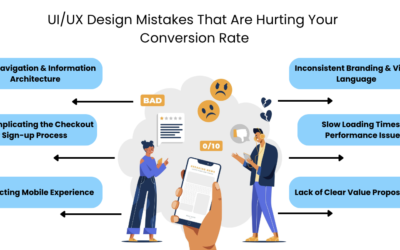Spoiler: They both want to win the user, but in very different ways.
Imagine you walk into a beautifully designed app. Everything looks sleek. But then… the button says “Click Here” without context, or the error message just says “Something went wrong.” Frustrating, right?
This is where UI UX copywriting jumps in to save the day.
What is UX Copywriting?
UX copywriting (also called microcopy or UI text) is the art of writing content that guides users within digital products — apps, websites, software — making their journey smoother, clearer, and more delightful. It’s about being helpful in the moment.
Example? Think of messages like:
- “We’re creating your workspace… just a sec!”
- “Forgot password? No worries — we’ve got your back.”
It’s short, functional, and human.
How It’s Different from Marketing Copywriting
| Feature | Marketing Copywriting | UX Copywriting |
| Goal | Persuade or convert | Guide or inform |
| Tone | Punchy, emotional | Clear, supportive |
| Context | Homepages, ads, emails | Buttons, tooltips, error messages |
| Timing | Pre- or post-product use | During product use |
| Outcome | Clicks, purchases | Ease, satisfaction, trust |
While marketing copy makes you say “I want this,” UX copy makes you feel, “Ah, this was easy.”
Real-World Scenario:
Let’s say you’re building a food delivery app. Your marketing copy might say:
“Craving solved in minutes. Get your favorite dishes delivered hot & fast!”
But when a user logs in, they face UX copy like:
“Hi Alex, Ready to order? Here’s what’s trending near you.”
Or
“Oops! Couldn’t process payment. Want to try another card?”
See the shift? One sells the experience, the other guides it.
Why UX Copywriting Matters (A Lot)
- According to a Google UX study, products with empathetic, easy-to-understand UI text see higher engagement and satisfaction.
- Airbnb redesigned its host sign-up flow using clearer microcopy and saw a 16% increase in completion rate (source).
- Dropbox’s famously witty error messages improved user delight and decreased support tickets.
Common UX Writing Mistakes (That Good UX Copy Solves)
- Overcomplicated language (replace “Authentication failure” with “Oops! Your password seems off.”)
- No error guidance (like “Something went wrong” with no fix)
- Unclear CTAs (“Submit” vs “Create My Account”)
These small details are huge friction points for users. This is where strategic user experience content writing steps in.
Concerns People Usually Have:
- “Isn’t UX copy just part of UI design?”
Nope. UX copywriting works hand-in-hand with UI, but it deserves its own strategy, testing, and tone guides. - “Can’t our marketing copywriter handle it?”
UX writers understand product flows, user psychology, and interface constraints. They test microcopy in real user scenarios it’s a different beast than writing ad slogans. - “Why invest in UX copy separately?”
Because users don’t drop off from a bad ad, they drop off when your interface confuses or frustrates them. Bad microcopy costs conversions silently.
Let’s say you run a SaaS platform. Users are dropping off at the “Set Up Your First Project” stage.
Your button currently says: “Next.”
Your empty state says: “No projects found.”
Now, reimagine with strong UX copywriting:
- CTA: “Let’s build your first project →”
- Empty state: “You haven’t started a project yet. Want help getting started?”
That shift alone can reduce churn and build trust.
How UX Prosperar Helps You Nail UX Copy
At UX Prosperar, we go beyond just “writing text.” We:
- Audit your existing UI content
- Conduct tone and empathy mapping
- Collaborate with product + design teams
- A/B test microcopy to improve conversion & reduce user confusion
- Build UI UX copywriting systems you can scale with confidence
Whether you’re launching a product or refining an app, UX Prosperar brings user-first writing to the table, with a deep understanding of digital behavior.
The next time you’re tweaking your interface, ask yourself:
“Is this helping or confusing the user?”
If you’re unsure, that’s your signal to bring in UX copy expertise.
Let UX Prosperar help you turn “Huh?” moments into “Aha!” ones.







